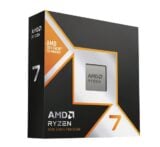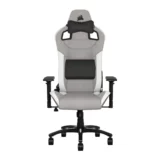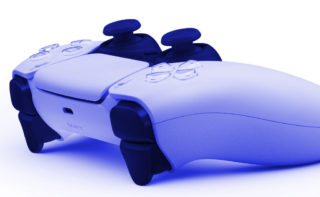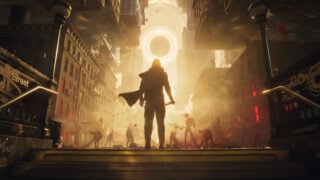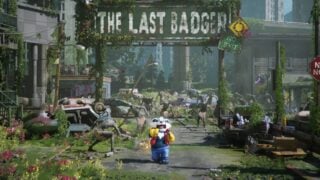Interview: Valve on Half-Life after Alyx
“We’re certainly very inspired to do more fun work”
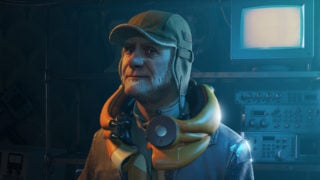
After nearly 13 years, Half-Life is finally back with the release of Valve’s VR-only Alyx.
Alyx is famously the first new release in the series since 2007’s Half Life 2: Episode Two, a fact that Valve itself is all too aware of.
“We were all very conscious it’s been 13 years since the last Half-Life game and we were going to announce a VR-only one,” designer Robin Walker told VGC. “For two and half years there were people on the team worrying about that.
“We joked that we were more worried about announcing the game than finishing it, which was a very novel experience. We just kept telling ourselves that if the game was really good then people would forgive us, and if the game wasn’t good then who cares? We’ve failed.”
Valve has previously insisted that Alyx is not a spin-off but “the next part” of the story, and VGC’s Half-Life: Alyx review reflects the Steam firm’s messaging with huge praise for the VR title.
Ahead of Alyx’s release, VGC spoke with Walker and programmer Kerry Davis via video call to discuss the future of Half-Life and Valve’s commitment to VR.
It seems like a pretty apt time to release a blockbuster VR game, with what’s going on in the world outside?
Robin Walker: Yeah, we totally planned this four years ago when we started this project! (Laughs)
I think we’ve been so focused on finishing this game. When you work on something like this for four years, those last few months are just all-encompassing. Even when you’re not working on the game, there’s still some part of your brain running it on a background thread.
So I’ve been eagerly anticipating being able to take that load off my mind and set it aside, but everything that’s happening now has sort of muscled its way into everyone’s mental state. I often think of the last month or two of a game as surreal anyway, because so much of what you’ve been doing for the past few years starts to shift, but this has just added this whole other layer of surreal nature. I feel like I’ve not even had a chance to process it yet.

Kerry Davis: I think it’s going to be good for me. My wife is a little tired of not seeing me for the past month or so. We had travel plans for after this shipped, but those are all off the table now. I think she’s looking forward to having some quiet time at home, watching some movies, working on puzzles and not thinking about putting on a VR headset!
It’s famously been more than a decade since the last Half-Life instalment. That considered, how did you approach pleasing existing fans and reaching out to new ones who probably haven’t played a Half-Life game?
Walker: We approached this more broadly than just from a narrative perspective: we thought about it from an experiential perspective, an art perspective and so on. That was informed by the very first thing that we built, which was this sort of prototype that was 30 minutes long and used all of Half-Life 2’s assets in VR. It was all the 2003-era textures and super low-res, but you could be in a place that looked like Half-Life in VR.
When we put that in front of people they had very strong reactions. They would often talk about how it was interesting to be in a place that they were very familiar with, but at the same time they were there in a way that they’d never really been before. Clearly they were reacting to this thing that was a mix of novelty and nostalgia, so we started to look at the pacing of that even down to stuff like what sounds we should keep or replace.
There was a real reason we decided to start the game in City 17 because we were trying to tug those nostalgic elements for those experienced players, but then as the game progresses we start to introduce new visual elements that are significantly different to what you’ve seen before. All of that came as part of a deliberate process of coming up with the right mix of nostalgia and novelty.
In terms of how we measured the success of that, we just put the game in front of lots of people. We probably had our first internal playtesters come in during the first year, so we’ve been watching people play this for three years. That’s a huge part of what we work on and how we work on it.
Davis: It was very helpful that a mix of the team worked on the first two Half-Life games, so they understand the franchise from the inside. We also have a large number of people who have joined the company since those games shipped and have always wanted to work on a Half-Life game, so they can see it from the fan perspective. I think being able to blend those two served the project well and allowed us to blend nostalgia and also have a new game experience.
“We were always searching for, ‘what is that thing? What is the hook that we’re going to hang our coat on in Half-Life 3?’ And it’s a really scary thing to work on, right?”
Did any cancelled concepts for past work such as Half-Life: Episode Three make it into Alyx?
Walker: I don’t think a whole lot of what we’ve done in the intervening years between Episode Two and Alyx made it into Alyx. The problem we were always struggling with in those intervening years was trying to find the big thing that was the answer for why the piece of Half-Life we were trying to build was interesting.
Half-Life products to us have always had some real opportunity at their core that is the defining spine of the product. So Half-Life 1 was obviously about telling stories in a new way in a first-person shooter, instead of just thinking of them simply as games where you shoot things. Then with Half-Life 2 we thought there was a real opportunity around how you represent characters and interact with them, plus player interaction with the burgeoning physics engines.
We were always searching for, ‘what is that thing? What is the hook that we’re going to hang our coat on in Half-Life 3?’ And it’s a really scary thing to work on, right? When you go to work on that sort of problem, it’s hard to sit down and say, ‘I’m going to write code today!’ Because before you do that you’ve got to figure out what the heck it is that we’re going to try to do. And you have to face the very real prospect that you could do a year of work and at the end of it, still not have an answer.
Where as in the case of Alyx we sort of cheated. We did a prototype, it was clear that VR added a lot to the core experience of Half-Life and so the game became, ‘figure out how all the things we understand in non-VR work in VR’ and that’s a thing I can start writing code for today. And so we sort of skipped that scary, abstract part and got to work, and the process of that work became, ‘what works well in VR?’

So Instead of looking at a previous monster we tried to build for the interstitial thing, we looked at the characteristics of VR that lent themselves well to enemies. There are enemies in the game that came very directly from us thinking about what’s fun to do in VR that weren’t things we cared about in the past, and how we build an enemy entirely around that concept.
I think it was really the medium shift more than anything else that didn’t cause us to go back and revisit concepts again. We started fresh.
Is it intimidating to work on a Half-Life game?
Davis: It’s a little intimidating for me, because I’ve not worked on one before. I was at the company when Half-Life 2 shipped but I was working on the Xbox 360 when we made Episodes One and Two. Definitely I feel a great sense of responsibility to the franchise and the fans.
You want to make something that’s new and original, but also still has that Half-Life feel and is going to make people happy to play it. It’s a little bit nerve-racking, but when you’re surrounded by this kind of team you just trust in your co-workers and your collective vision and hope it comes out for the best.
Walker: I think working on Half-Life is just incredibly fun. The reason I say that is because the way we build Half-Life I find very fun.
Games like Counter-Strike or DoTA are like marathons where you’ve got such an enormous audience publicly that you can’t move fast enough in that process: you tend to work on these updates and then ship them. It’s more like a collaborative dance with the community as a whole.
Where as Half-Life as a single-player game is very much a crafted experience. We’ll go into a room with a group of people – level designers, artists and programmers – and we’ll talk about what happens in this room here, and we’ll talk about it until we have a design we like and we’ll build it.
Then we’ll bring a player in and watch them play through that room, iterate on that room, then move on to the next one. Every room starts with, ‘what are we doing in this room that we haven’t done in all the ones prior to it?’ And by room I sort of mean conceptually… it’s not necessarily a room.
And so building a Half-Life game is just building a lot of rooms, one after the other. You’ll end up with gameplay arcs that cross over sets of rooms or whatever. We collectively call this ‘The Track’. Process wise I find this to be a really fun way to make a game. You’re constantly going from watching somebody play a thing you’ve worked on to building the next area.
“We knew that one of the questions that we were going to get from customers before we announced was, ‘why did you do this in VR?’ That’s a completely rational question from their mind and I understand why they’re asking that.”
The single best way to get better as a game developer is to watch other people play games and this process forces that upon you. You’re very tied to the player experience, I guess. For me the overwhelming thought I have when I think about working on Half-Life is less intimidating… at the end of the day I find it very fun.
You get to watch people play your game and see their reactions right in front of you, where as with the larger service based games you ship, then see what people on the internet say – and because it’s the internet they say everything.
And VR has made this process even more fun than previous Half-Life games because the player can move and emote so much more in VR than they can in non-VR. You can see a person’s whole body react to the experience which is always really fun.
How do you feel about the section of fans who will be waiting for the inevitable mod that removes all the VR elements?
Walker: I’m looking forward to it. I’ve been half trolling members of the team who are worried about this!
I think at the end of the day, we knew that one of the questions that we were going to get from customers before we announced was, ‘why did you do this in VR?’ That’s a completely rational question from their mind and I understand why they’re asking that.
We have a lot of things that we can say to them about why we made that choice and why we think it’s turned out well, but at the end of the day the game will explain to them why, once they get a chance to play it or see it somewhere. They will understand why we made this choice. We think we’ve gotten a huge amount from that choice. We would never have made a choice that big if we didn’t think we were getting a huge amount of value out of it.
As a result, what I’m confident will happen is that when people get that butchered version, and they’ll have lost all the things that we’ll have got from moving to VR, they will then understand very clearly why we made that choice. There’s a part of me that’s eager for people to be able to have that experience and realise, ‘oh, now I get it. Now I see everything we lost in that transition back to non-VR and I understand why they did it.’
You said some of the team were worried about a non-VR mod?
Walker: Oh, it’s not that exciting. Everyone is worried about everything all the time. That’s the nature of game development and this product has been a little unique in that because of some of the stuff you’ve discussed. We were all very conscious it’s been 13 years since the last Half-Life game and we were going to announced a VR-only one. For two and half years there were people on the team worrying about that.
We joked that we were more worried about announcing the game than finishing it, which was a very novel experience. We just kept telling ourselves that if the game was really good then people would forgive us, and if the game wasn’t good then who cares? We’ve failed. We just focused on making the game as good as we could.
Thankfully the reaction we saw when the first trailer released allowed us to breath a big sigh of relief and focus on finishing the game. It was clear that people still cared about Half-Life, which was something we’d worried about as well, and they were excited about what they saw. That was enough to keep us going.
What does success look like for Alyx? Would you like to see more uptake in VR? Or is critical acclaim enough?
Davis: Our first goal was to make sure that as many people as possible could play it, so we wanted to make sure that it was available on as wide a range of hardware that’s out there. You can play it on the Valve Index or the Oculus Quest, Vive, Windows MR… it was about making it as accessible as possible, especially as VR is now becoming more affordable.
Walker: Aside from hardware, we also wanted to make the game available in whatever way you liked to play in VR, whether you like to teleport around or if you want continuous movement, seated or standing… we tried to build solutions for all these sorts of things.
In terms of what success looks like, one of the benefits of being a company that owns itself is that we’re able to take longer term views on things. We’ve always been confident that VR is a thing that’s interesting to people. We were never ones who believed any of the future that venture capitalists believed that suddenly it was going to replace TV and video games in one go.
For us VR is a really interesting platform and we believed there were experiences that we could build in there that wouldn’t be possible in non-VR, in particular around the input system that we have. We felt like we needed to build one of those games ourselves just to find out.
Like any other video game platforms we don’t think this is going to replace your PC or consoles, we just think this will be another platform that has unique experiences on it that you can’t get anywhere else. Long-term we want to make sure that we are able to build really good games on whatever platform people would like us to build games on.
That’s one of the reasons we tried to take a shot at this. It was also clear that VR was progressing nicely on the hardware side, with significant advancements. But on the game side we would still see customers saying things like, ‘let me know when the big triple-A games show up’. Everybody understands the chicken and egg problem there.
There have been a lot of studios doing really interesting mechanical exploration around VR, but it was harder for them to justify the significant resource expenditure it required to make a title like Alyx. We thought there was a role we could play in that space.

How much of your commitment to VR or non-VR depends on the reaction to Alyx?
Walker: One of the luxuries that we have as a company is that we don’t have to live or die by the exact sales number or anything like that. With all of our products we’ve always tried to extract as much data as we can get from sales but also players comments and stuff like that… you’ve got to extract some sort of signal about what you did right and what you did wrong.
It’s tricky because in the case of Alyx we’re going to try and assess the quality of the decisions we’ve made over the past several years based on the next month. There’s no clean, simple way to do that… it’s a bunch of conversations, data analyses and so on.
All I can say about what’s going to happen in the next three-to-six-months is that a lot of people at Valve are going to have a lot of conversations about Alyx and the choices we made, based upon things we’ve read online, conversations we’ve had, Steam data about how people are playing… all these things become information and we will chew on and talk about it.
In terms of what we do next, we don’t really know. Because we’d be foolish to make a decision now until we’ve got a bunch of that data, right? A week from now we’ll know a heck of a lot more than we will today, because the game will be out and people will be playing and talking. We always try to encourage ourselves not to make decision if we don’t have to, and we can wait a little longer and know more.
So is it fair to say the company is not necessarily committed exclusively to VR going forwards?
Walker: The super short answer is no, we’re not committed to all VR but we’re not committed to all non-VR either. We would just never make any statement like that. Some of the journalists I’ve been talking to recently have been bringing up a comment Gabe made ten years ago about how we wouldn’t make single-player games again.
There was more nuance to his statement than that, but the reality is we should never say we’re going to do X or Y in the future, because nobody knows what the state of the video game landscape will be five or ten years from now.
One of the things we have as a company is freedom. We don’t have to produce sequels just for the sake of it and we don’t have to stick to any particular vision of the future for how video games are going to turn out. I know it’s frustrating perhaps for players who think we’re refusing to answer these kinds of questions, but the honest answer is we don’t know.
We don’t know what we’re going to do in five years from now and we don’t think it serves us or our customers well to try and make that decision today. So let’s just roll with what happens.
“I think we’d really enjoy to get to continue and build whatever the next piece of Half-Life is and see whether we get to do that.”
Are fans going to have to wait another 13 years for the next Half-Life?
Walker: I hope not because if that’s the case then I definitely won’t be working on it! (laughs)
Davis: Yeah I think I’m going to have to retire before those 13 years are up, so I would hope not as well!
Walker: With Valve it tends to be more of a human problem than a business problem, but I do think it’s clear that a lot of people had a hell of a lot of fun making this game and we’re really proud of it. That’s pretty important to the likelihood that we continue to work on this sort of stuff. There’s a lot of eagerness to continue working on it.
It’s sort of a truism in game development that it’s at the end of the game when you’ve finally got good at making it. You’re like, ‘man, if we made the game again now it’d be really good!’ So that’s playing out in the team right now as it always has and I think we’d really enjoy to get to continue and build whatever the next piece of Half-Life is and see whether we get to do that.
Davis: With any giant project the most difficult part is taking that first step and getting things moving. This project was a big first step to getting a lot of peoples’ excitement and creative juices flowing in this space. We’re certainly very inspired to do more fun work in this area.



